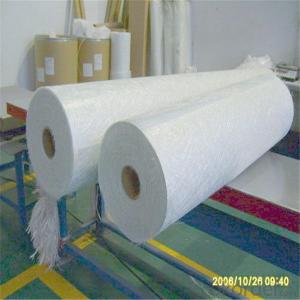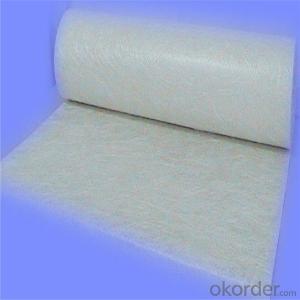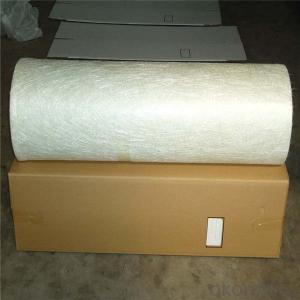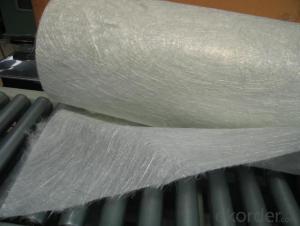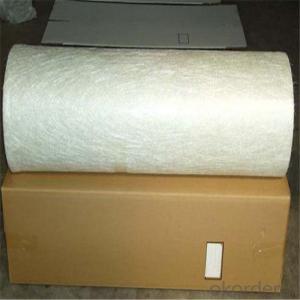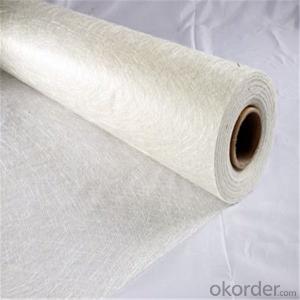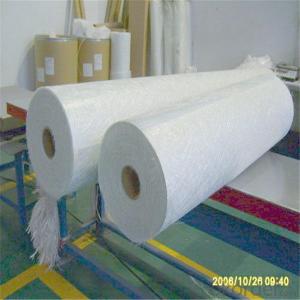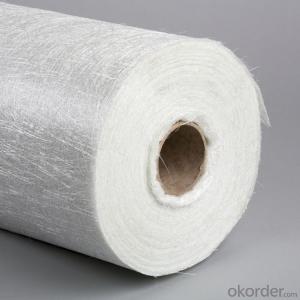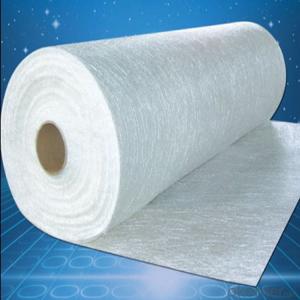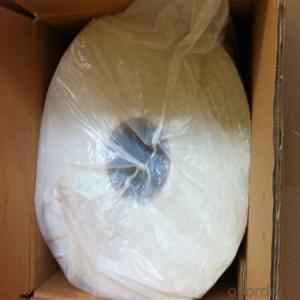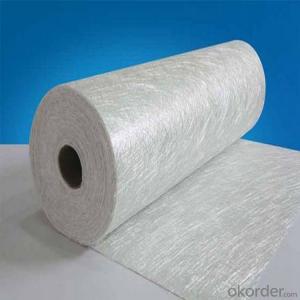100g Glassfiber Chopped Stand Mat, Fiberglass Car Body
- Loading Port:
- Tianjin
- Payment Terms:
- TT OR LC
- Min Order Qty:
- 100 m.t.
- Supply Capability:
- 20000 m.t./month
OKorder Service Pledge
Quality Product, Order Online Tracking, Timely Delivery
OKorder Financial Service
Credit Rating, Credit Services, Credit Purchasing
You Might Also Like
Quick Details
| Technique: | Chopped Strand Fiberglass Mat (CSM) | Dimensions: | 450gsm | Mat Type: | Continuous Filament Mat |
| Fiberglass Type: | E-Glass | Softness: | softness | Place of Origin: | Jiangxi, China (Mainland) |
| Brand Name: | cnbm | Model Number: | 450gsm | color: | white |
| fiberglass type: | E glass | product: | e-glass powder chopped stand mats | binder: | powder or emulsion |
| width: | 1040 or 1270mm, as your requirement | weight: | 30 or 45kg/roll | paper tube diameter: | 90mm |
| outer diameter of roll: | 256mm | packing: | plastic film+carton box + pallet |
Packaging & Delivery
| Packaging Details: | plastic film+carton box + pallet |
| Delivery Detail: | 15-20days |
Specifications
1.e-glass powder chopped stand mats
2.binder:power or emulsion
3.width:1040mm or 1270mm
4.weight:450gsm
Picture
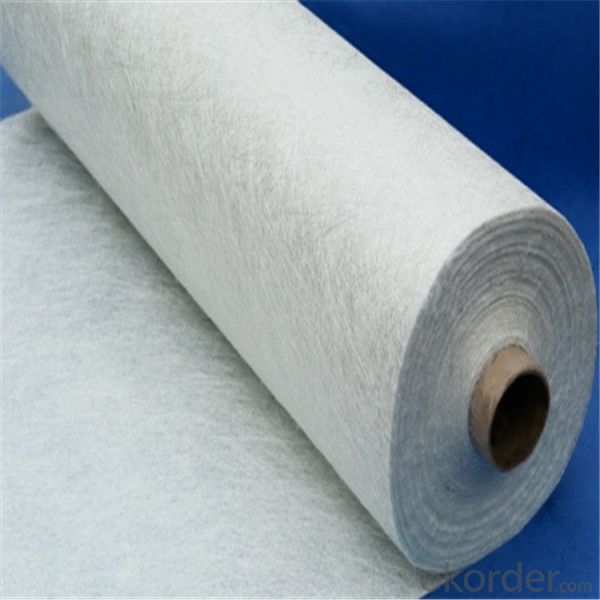
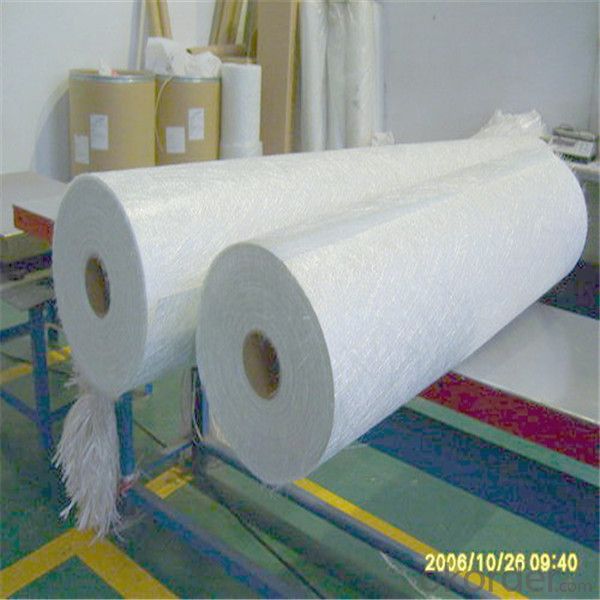
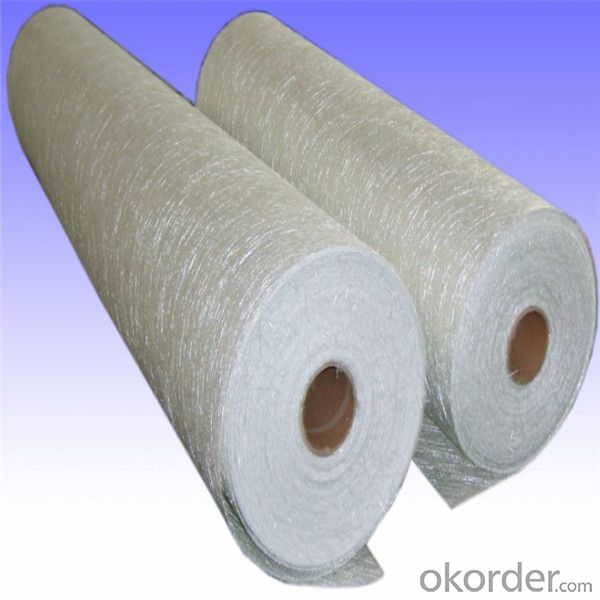
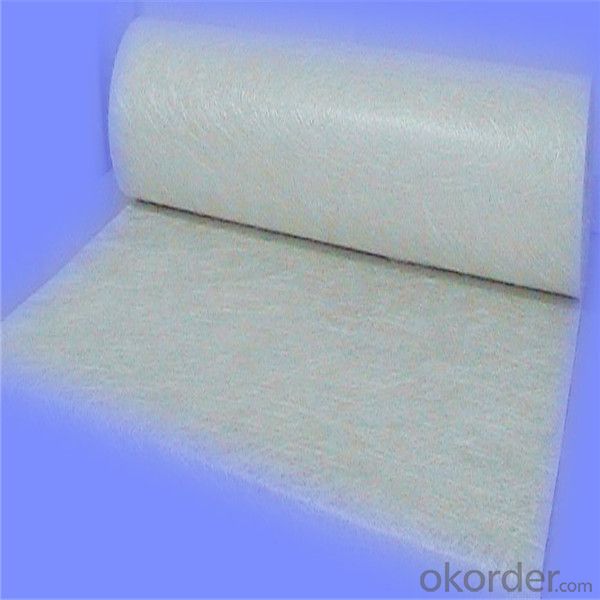
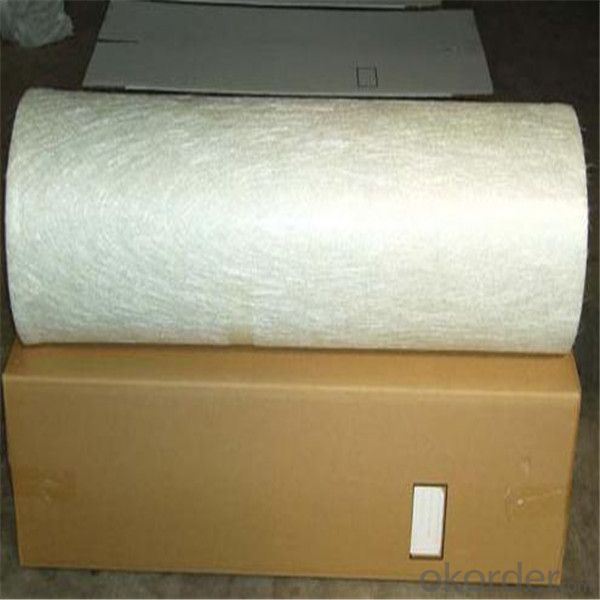
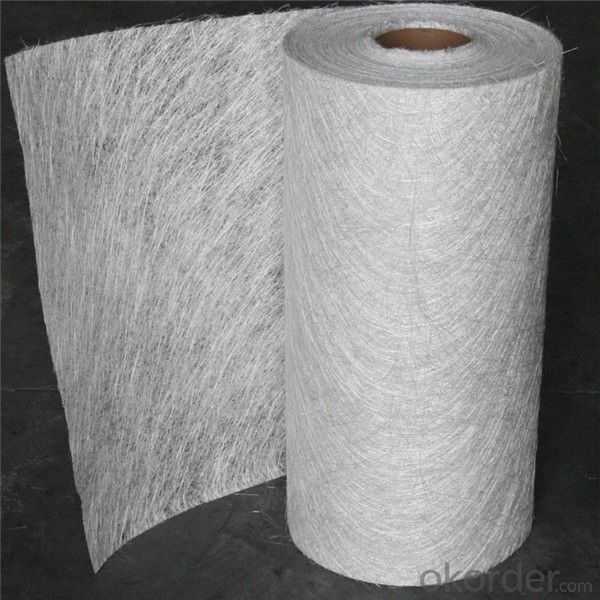
- Q:How is the thermal stability of fiberglass chopped strand composites determined?
- Various testing methods and analysis are used to determine the thermal stability of fiberglass chopped strand composites. One commonly used technique is thermogravimetric analysis (TGA), which involves heating the sample at a controlled rate and measuring the weight loss as the temperature changes. During TGA, the composite's temperature is gradually increased and its weight change is monitored. The degradation or decomposition of the material is indicated by the weight loss. By analyzing the weight loss curves, the temperature at which significant degradation or weight loss occurs, indicating the thermal stability of the composite, can be determined. Another method for assessing thermal stability is differential scanning calorimetry (DSC). DSC measures the heat flow into or out of the sample as it undergoes a controlled temperature program. It provides information about the composite's glass transition temperature, melting temperature, and decomposition temperature. The decomposition temperature is particularly important in determining thermal stability. Furthermore, dynamic mechanical analysis (DMA) can be employed to evaluate the thermal stability of fiberglass chopped strand composites. DMA measures changes in mechanical properties like stiffness and damping as the temperature changes. Significant changes in these properties can indicate degradation and loss of thermal stability. In conclusion, the thermal stability of fiberglass chopped strand composites is determined by subjecting the material to controlled heating and analyzing its weight loss, decomposition temperature, glass transition temperature, and changes in mechanical properties using techniques such as TGA, DSC, and DMA. These tests provide valuable information about the behavior of the composite under thermal stress and help ensure its suitability for various applications.
- Q:What are the acoustic properties of fiberglass chopped strand?
- Fiberglass chopped strand has several acoustic properties that make it a popular material in various applications. Firstly, it has excellent sound absorption capabilities due to its fibrous structure. The random orientation of the chopped strands creates spaces and voids that effectively trap and dissipate sound energy, reducing echo and reverberation in enclosed spaces. Additionally, fiberglass chopped strand exhibits low density, making it a lightweight material with good sound insulation properties. It can effectively block and reduce the transmission of sound waves, making it suitable for applications where noise control is important, such as in building construction or automotive interiors. Moreover, fiberglass chopped strand is known for its high tensile strength and durability, which contributes to its acoustic performance. Its strong and resilient nature allows it to maintain its sound-absorbing and insulating properties over time, even in demanding environments. Another advantage of fiberglass chopped strand is its versatility in terms of customization. It can be manufactured with varying thicknesses and densities to meet specific acoustic requirements. This flexibility allows it to be tailored for different applications, such as in soundproofing panels, acoustic ceiling tiles, or speaker enclosures. Lastly, fiberglass chopped strand is non-combustible and resistant to moisture, mold, and mildew. These properties make it suitable for use in areas where fire safety and moisture resistance are critical, such as in theaters, recording studios, or industrial settings. Overall, the acoustic properties of fiberglass chopped strand, including its sound absorption, insulation, strength, customization options, and resistance to fire and moisture, make it a favored material for a wide range of applications where sound control and quality are important.
- Q:How does the processing temperature affect fiberglass chopped strand?
- The properties and performance of fiberglass chopped strand are significantly influenced by the processing temperature. If the temperature is too low, the resin may not fully melt and evenly distribute on the strands, leading to poor wetting and adhesion. Consequently, the mechanical properties and bonding between the chopped strand and resin matrix may be compromised. Conversely, excessive heat can cause degradation of the fiberglass strands, resulting in reduced strength and stiffness. Additionally, fiber breakage due to high temperatures can adversely affect the overall mechanical properties of the composite material. Moreover, the processing temperature has an impact on the viscosity of the resin. Higher temperatures decrease viscosity, facilitating better wetting of the chopped strand and leading to improved mechanical properties in the final product. Furthermore, the curing time of the resin is influenced by the processing temperature. Higher temperatures accelerate the curing process, which can be beneficial in terms of reducing production time. However, careful control of temperature is necessary to prevent premature curing or overheating, as these can lead to incomplete curing, voids, and defects in the final composite. In conclusion, the processing temperature is crucial for achieving high-quality fiberglass chopped strand. It affects wetting, adhesion, mechanical properties, curing time, and overall integrity of the composite material. Therefore, optimizing the processing temperature is necessary to ensure desired properties and the production of top-notch fiberglass composite products.
- Q:Can fiberglass chopped strand be used in the production of agricultural equipment?
- Yes, fiberglass chopped strand can be used in the production of agricultural equipment. Fiberglass is a versatile material that offers several advantageous properties for agricultural applications. It is lightweight, strong, and durable, which makes it suitable for use in equipment such as tractor hoods, fenders, and panels. Fiberglass also has excellent corrosion resistance, which is important in the agricultural industry where equipment is exposed to various weather conditions and chemicals. Additionally, fiberglass can be molded into complex shapes, allowing for the customization of agricultural equipment according to specific requirements. Overall, using fiberglass chopped strand in the production of agricultural equipment can enhance its performance, longevity, and reliability.
- Q:What are the disposal options for fiberglass chopped strand waste?
- There are multiple avenues for disposing of fiberglass chopped strand waste. One possibility is recycling the waste material. This involves grinding down the fiberglass and incorporating it as a filler in other products such as concrete or asphalt. This approach not only reduces landfill waste but also allows for the reuse of the fiberglass. Another option is to incinerate the chopped strand waste. Incineration can effectively dispose of fiberglass waste and produce energy through the combustion process. However, it is crucial to emphasize that incineration should only occur in facilities equipped with proper air pollution control systems to minimize the release of harmful emissions. If recycling or incineration is not feasible, landfill disposal presents another alternative. Nevertheless, this should be a last resort due to potential environmental consequences. When disposing of fiberglass chopped strand waste in a landfill, it is imperative to ensure proper containment and management to prevent potential leaching of hazardous materials. To summarize, disposal options for fiberglass chopped strand waste encompass recycling, incineration, and landfill disposal. It is advisable to prioritize recycling and incineration whenever possible to minimize the environmental impact of this waste material.
- Q:Can fiberglass chopped strand be used in the production of water pipes?
- Indeed, fiberglass chopped strand can be effectively utilized in the manufacturing of water pipes. Fiberglass proves to be an extremely versatile material that boasts numerous advantageous properties for the production of water pipes. Its exceptional strength and rigidity render it highly suitable for effectively managing the pressure and stress associated with water distribution systems. Furthermore, fiberglass possesses an inherent resistance to corrosion, enabling it to endure exposure to a wide range of chemicals and minerals present in water without experiencing any deterioration. Moreover, its lightweight composition facilitates easier handling and transportation throughout both the production and installation processes. In addition to these qualities, fiberglass exhibits excellent insulating capabilities, thereby facilitating the maintenance of the desired temperature of the water coursing through the pipes. Ultimately, incorporating fiberglass chopped strand into the manufacturing of water pipes can yield infrastructure that is not only durable and long-lasting, but also consistently reliable for the distribution of water.
- Q:What are the packaging options for fiberglass chopped strand?
- The packaging options for fiberglass chopped strand typically include bulk bags, cardboard boxes, and plastic bags.
- Q:How does the weather resistance of the chopped strand affect its performance?
- The weather resistance of the chopped strand affects its performance by determining its ability to withstand exposure to various environmental conditions without degrading or deteriorating. A chopped strand with good weather resistance will be able to maintain its physical and mechanical properties, such as strength, stiffness, and dimensional stability, even when exposed to factors like sunlight, moisture, temperature fluctuations, and chemical exposure. On the other hand, a chopped strand with poor weather resistance may experience reduced performance, such as reduced strength, increased brittleness, or discoloration, when subjected to these weathering factors. Therefore, the weather resistance of the chopped strand is crucial in ensuring its long-term durability and reliability in applications where it will be exposed to outdoor or harsh conditions.
- Q:How is fiberglass chopped strand used in the oil and gas industry?
- Fiberglass chopped strand finds widespread use in the oil and gas industry due to its impressive mechanical and thermal properties. It primarily serves as a reinforcement material for creating composite components and structures. A key application of fiberglass chopped strand in the oil and gas industry lies in the production of corrosion-resistant pipes and tubing. These pipes endure harsh environmental conditions, including exposure to corrosive substances like oil, gas, and chemicals. By incorporating fiberglass chopped strand into the polymer matrix of the pipes, their corrosion resistance is substantially improved. This not only prolongs their lifespan but also reduces the need for frequent replacements. Furthermore, fiberglass chopped strand is also employed in the manufacture of storage tanks, vessels, and containers utilized in the oil and gas industry. These components necessitate high strength, durability, and the ability to withstand extreme temperatures and pressures. By integrating chopped strand into the composite matrix, the structural integrity of these products is reinforced, enabling them to endure the demanding conditions encountered in the oil and gas sector. In addition, fiberglass chopped strand is utilized in various other applications within the oil and gas industry, such as insulation materials, gaskets, seals, and electrical components. Its thermal insulation properties make it an excellent choice for insulating pipelines and equipment, preventing heat loss or gain and maintaining the desired temperature during the transportation or processing of oil and gas. To summarize, fiberglass chopped strand plays a critical role in the oil and gas industry by enhancing the performance and durability of composite materials used in pipes, tanks, insulation, and other crucial components. Its remarkable mechanical strength, corrosion resistance, and thermal insulation properties make it the preferred choice for reinforcing vital infrastructure and equipment in this sector.
- Q:How is fiberglass chopped strand used in the aerospace industry?
- Due to its unique properties, fiberglass chopped strand finds common usage in the aerospace industry for various applications. One of its primary roles in this industry is to reinforce composite materials, which are extensively utilized in the construction of aircraft structures like wings, fuselages, and tail sections. To create a composite material that offers exceptional strength and stiffness, the chopped strand is typically mixed with a resin matrix, such as epoxy or polyester. The length of the chopped strands may vary depending on the specific application, but they generally fall between 1 to 3 inches in length. The aerospace industry demands lightweight materials that can withstand extreme conditions, including high temperatures and vibrations. Fiberglass chopped strand is an ideal choice due to its high strength-to-weight ratio and excellent resistance to heat and corrosion. Additionally, it provides good dimensional stability, allowing the composite materials to maintain their shape and structural integrity under diverse operating conditions. Moreover, fiberglass chopped strand enhances the impact resistance of the composite materials, a crucial factor in ensuring the safety of aircraft structures. It also improves fatigue resistance, enabling the materials to endure repeated stress cycles without failure. Apart from reinforcing composite materials, fiberglass chopped strand is also employed for insulation purposes in the aerospace industry. It is commonly integrated into insulation panels and materials that safeguard critical components, such as electrical wiring and fuel lines, from extreme temperatures and fire hazards. All in all, fiberglass chopped strand plays a crucial role in the aerospace industry by providing lightweight, strong, and durable materials that meet the stringent requirements of aircraft construction. It ensures the safety and performance of aerospace vehicles, making it an indispensable component in this field.
1. Manufacturer Overview |
|
|---|---|
| Location | |
| Year Established | |
| Annual Output Value | |
| Main Markets | |
| Company Certifications | |
2. Manufacturer Certificates |
|
|---|---|
| a) Certification Name | |
| Range | |
| Reference | |
| Validity Period | |
3. Manufacturer Capability |
|
|---|---|
| a)Trade Capacity | |
| Nearest Port | |
| Export Percentage | |
| No.of Employees in Trade Department | |
| Language Spoken: | |
| b)Factory Information | |
| Factory Size: | |
| No. of Production Lines | |
| Contract Manufacturing | |
| Product Price Range | |
Send your message to us
100g Glassfiber Chopped Stand Mat, Fiberglass Car Body
- Loading Port:
- Tianjin
- Payment Terms:
- TT OR LC
- Min Order Qty:
- 100 m.t.
- Supply Capability:
- 20000 m.t./month
OKorder Service Pledge
Quality Product, Order Online Tracking, Timely Delivery
OKorder Financial Service
Credit Rating, Credit Services, Credit Purchasing
Similar products
New products
Hot products
Hot Searches
Related keywords
